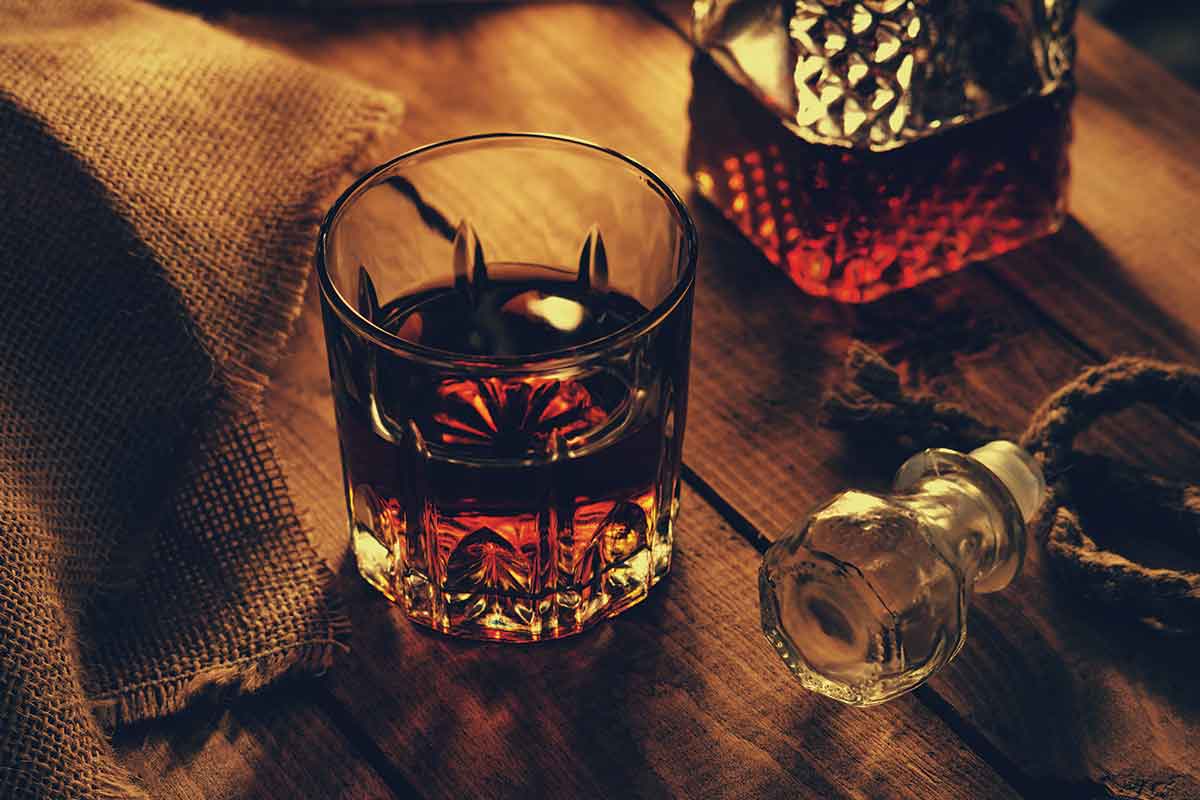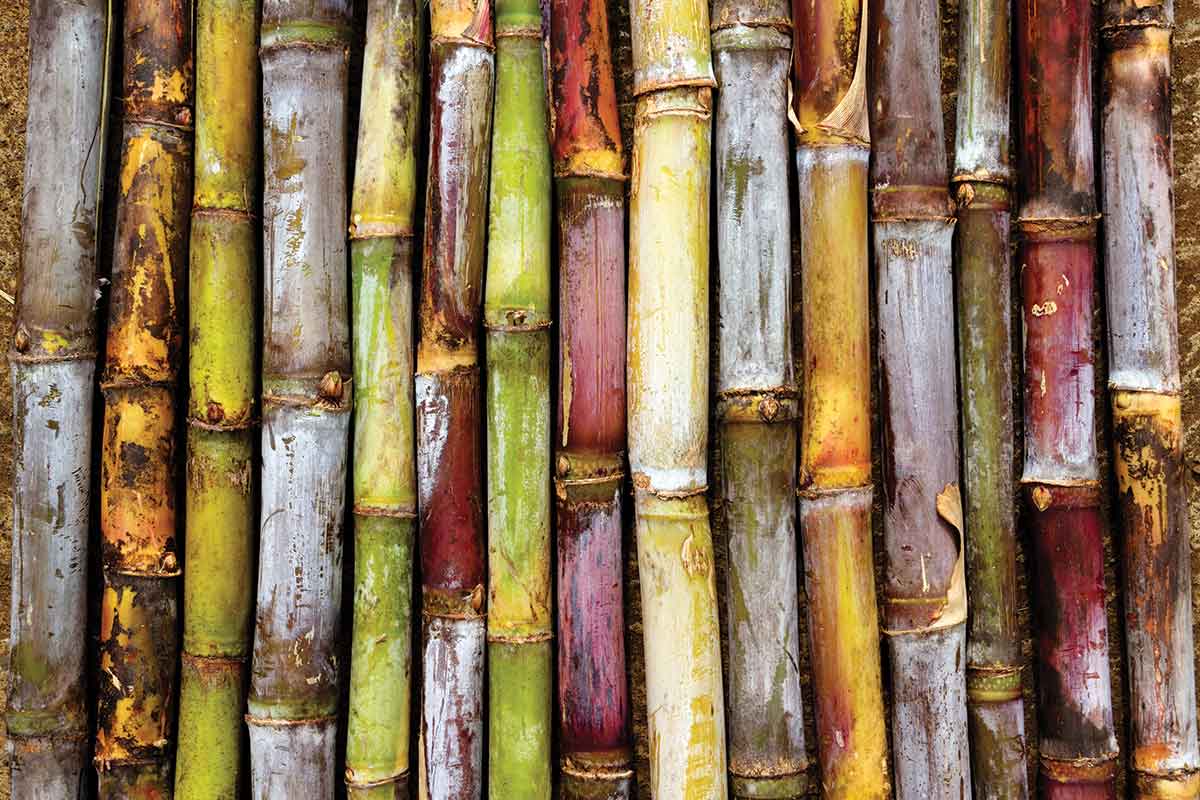It might be hard to believe but at one point in the United States, Jamaican rum was kind of a big deal. Highly prized by our American forefathers, it was used to great imbibing effect in serves such as the classic Fish House Punch. However, Prohibition created a cultural buzzkill and most Americans were forced to go without this Caribbean gem during our livers’ forced federal fealty. Thanks to cocktail revivalists and tiki-storians, funky Jamaican rum is making a comeback. It appears that it’s finally here to stay.
Gotta Have That Funk
On paper Jamaican rum doesn’t seem to be made much differently from other rum styles. It starts in the sugarcane fields which then get harvested and transformed into crystallized sugar with molasses as the byproduct. Molasses forms the fermentable base of the rum. Add yeast, ferment, distill and voilà—we have rum.
But when you’re talking about Jamaican rum, you often hear the word “funk” along with it. Here “funk” refers to the intensely fruity, estery, and sometimes nutty flavors that all seem to complement one another.
You may also see the word “hogo” attached to some of these rums. Hogo roughly equates to “terroir-driven funk” and Jamaican rum has it in spades.

Dunder Mifflin Magic
Where many Jamaican rums deviate from the typical rum formula is during fermentation. Jamaican distillers practice the fine art of adding “dunder” to their fermenters. Dunder is the leftover residue from the previous molasses distillation. It has nutrients and acids that help the fermentation progress smoothly. If that sounds familiar to whiskey lovers, it’s because it is the same theory behind sour mashing in the bourbon and Tennessee whiskey world.
A lot of compounds in dunder contribute to the flavors and aromas during fermentation. The distillers will also allow their fermentations to go much longer than the standard 2-4-day ferments that many rum makers use. It’s not unheard of for Jamaican distillers to let their fermentations run up to three weeks. During this time natural yeasts and bacteria produce a wild array of aromas that add to the characteristic funky Jamaican rum.
Mucking About
Now that all sounds good, but what if you want to produce something truly funky? We’re talking Parliament Funkadelic covering Rick James’ Superfreak while high on bath salts levels of funk. Well then you add the secret funky weapon: muck. Muck is essentially a trash collection of heavy dunder waste, leftover sugarcane scrap, and sometimes rotting fruit. This ominous liquid is left to its devices and exposed to the elements in outdoor pits where various bacteria and wild yeast form unholy alliances to produce even unholier aromas.
For truly funky Jamaican rums, some of this muck will get added to the fermenters. Why would you want to add rotting trash to your fermentation? The answer lies in organic chemistry (cue high-school-memory induced groan). Muck is rich in fatty acids. During fermentation these foul-smelling acids become esterified into highly pleasant aromas like pineapple and over-ripe banana. It takes time, which is why Jamaican rums can sometimes take so long to ferment. These esters carry over into the distillate producing some of the most intense and, yes, funky spirits this side of George Clinton’s tour bus.

Hooray, Rum!
There are six operating distilleries in Jamaica right now: Worthy Park, Appleton Estate, New Yarmouth Estate, Hampden Estate, Long Pond and Clarendon. Some use pot stills, others use column stills. Some focus on aged expressions, and a few work mostly on unaged high-proof bottlings. Despite there being only six distilleries, there’s a surprising amount of diversity in the products produced.
The rums from Appleton Estate lean to more subdued funkiness but are elevated by rounded barrel character. Releases from Hampden Estate skew towards a true funk-fest with their famed Rum-Fire brand (comically bad label and all)—practically spitting esters into the air as soon as the bottle is opened. It makes for a hogo lover’s dream and since it clocks in at a face-smacking 63%, a little goes a long way.
Of course, you can’t discuss Jamaican rum without talking about Wray and Nephew Overproof. This 63% abv beast is the most consumed rum in Jamaica and is produced at the New Yarmouth Estate. An unaged white rum, it has powerful molasses tones on the nose surrounded by tropical fruit and over-ripe banana.
Everyday Drinks
The preferred way to drink it in Jamaica is in a Wray and Ting; add a few ounces of Wray and Nephew Overproof to a glass full of ice and top with Ting grapefruit soda. As far as mixed drinks go, it’s about as unpretentious and delicious as it gets; a liquid equalizer if you will.
And that’s one of the best attributes of Jamaican rum. It is democratic in its existence. These are rums meant to be consumed with friends on any occasion. Except for some of Appleton Estate’s (admittedly delicious) high end/long aged offerings, most Jamaican rum is only aged for a few years, if at all, making for dollar-happy everyday sippers. These are rums that almost seem to bring the party to them, all you need is an excuse to get some friends over for a round of drinks. Just don’t be surprised if you and your friends wind up catching the funky Jamaican rum bug after a couple of pours.
Does your collection have any funky Jamaican rum in it?
With Distiller, you’ll always know what’s in the bottle before you spend a cent. Rate, Review, and Discover spirits. Head on over to Distiller, or download the app for iOS and Android today!
Want to enjoy Distiller ad-free plus exclusive discounts, giveaways, features and other perks? Join Distiller Pro today to support the Distiller platform and keep ads off of your screen.


